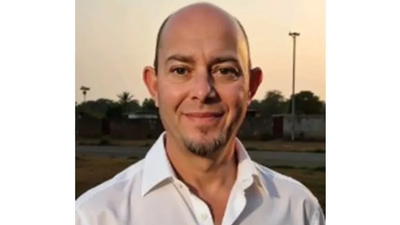Meet Dr. Eric Moses
Dr. Eric Moses is a board-certified Anesthesiologist with over 30 year's experience managing airways. He began his career as a paramedic, practicing on the ground and helicopter, in clinical, educational and management roles. He is well versed in the challenges of pre-hospital emergent airway management and compassionate to the extenuating circumstances with which prehospital providers contend. Placement of the endotracheal tube in resuscitation is critical, and unfortunately today, one in three attempts fail.
In the perioperative arena, practitioners have extensive training and practice, and advanced tools to ensure proper tube placement. Over his 20 years in anesthesia, Dr. Moses has observed that quality improvement efforts are devoted mainly to the intubation procedure, with little thought given to extubation. While there are system and surgeon pressures to extubate patients fully under anesthesia to prevent bucking and complications, the trend is to perform awake extubations that allow for bucking, hemodynamic variability, and potentially worse surgical outcomes.
For these reasons, Dr. Moses is interested in better understanding the current practice of deep extubation by his peers and in developing evidence-based standards for safer deep extubation. What research is needed to create better guidelines? How do we more appropriately educate and train physicians on performing deep extubation? When, where, and on what patients?
Dr. Moses and his team have developed a questionnaire to collect data from practitioners in order to build support for such a meaningful initiative. He and a volunteer medical student from Upstate Medical University, Anthony Curione, will be presenting a poster at the World Airway Management Meeting (WAMM) in Florence, Italy, November 5-8. Please reach out and join the mission to support, research, train, and practice safe deep extubation.

Our Team is Innovating Deep Extubation Safety

Daniel Platt, M.D.
Daniel Platt, M.D.
Daniel Platt, M.D.
Dr. Platt is an accomplished and experienced healthcare and business professional with a background as a physician-scientist and pharma/biotech consultant and executive. His expertise spans the gamut from clinical development to medical affairs to commercial strategy, and he has worked with companies of all sizes, from biotech start-ups t
Dr. Platt is an accomplished and experienced healthcare and business professional with a background as a physician-scientist and pharma/biotech consultant and executive. His expertise spans the gamut from clinical development to medical affairs to commercial strategy, and he has worked with companies of all sizes, from biotech start-ups to the largest pharma corporations in the world, to drive improvements in patient care and outcomes.

Andrew Gano
Daniel Platt, M.D.
Daniel Platt, M.D.
Andrew brings over 15 years of executive leadership experience developed with multiple airway device industry leaders including Medtronics and Olympus. While serving as Medtronics Airway Divisions’ Global Director of Business Development, Strategy & Portfolio Management, Andrew re-invisioned its global strategy and operating plan, brokered acquisitions and sought a solution to deep extubation.

Dan Mayer, M.D.
Anthony D. Curione
Anthony D. Curione
is a retired Professor of Emergency Medicine (formerly at Albany Medical College) but remains engaged as a Fellow of the American Academy of Emergency Medicine and the American College of Emergency Physician. He has contributed extensively to clinical scholarship in emergency medicine, including peer-reviewed articles and editorials on e
is a retired Professor of Emergency Medicine (formerly at Albany Medical College) but remains engaged as a Fellow of the American Academy of Emergency Medicine and the American College of Emergency Physician. He has contributed extensively to clinical scholarship in emergency medicine, including peer-reviewed articles and editorials on evidence-based practice, diagnostic error, and capacity assessment in the ED.

Anthony D. Curione
Anthony D. Curione
Anthony D. Curione
Anthony Curione is a medical student at SUNY Upstate Medical University involved in clinical research focused on airway management and anesthesia safety. As part of the deep extubation research team, he contributes to data collection, protocol refinement, and analysis aimed at optimizing extubation practices and improving patient outcomes.
Presented at the World Airway Management Meeting (WAMM), Florence, Italy, November 5th - 8th, 2025
Journal Articles
Explore peer-reviewed studies and clinical evidence that guide our understanding of deep extubation safety, outcomes, and best practices. This collection highlights the latest research shaping airway management and patient care during emergence from anesthesia.
Incidence of airway complications associated with deep extubation in adults (pdf)
DownloadA comparison of deep versus awake tracheal extubation in adults (pdf)
DownloadThe effect of deep and awake extubation on emergence agitation after nasal surgery. (pdf)
DownloadLMA facilitates safe and smooth emergence from anesthesia in patients undergoing craniotomy. (pdf)
DownloadConnect With Us
Contact Information
Thank you for your interest in improving the understanding of deep extubation among healthcare providers. Whether you have an interest in research, education, or just want to join the dialogue, we welcome you on this mission.
This website uses cookies.
We use cookies to analyze website traffic and optimize your website experience. By accepting our use of cookies, your data will be aggregated with all other user data.